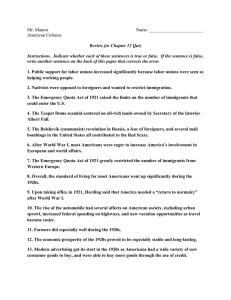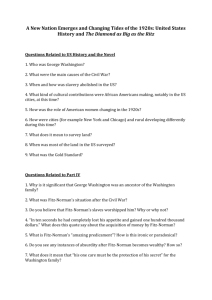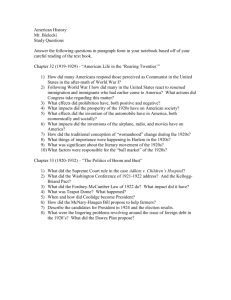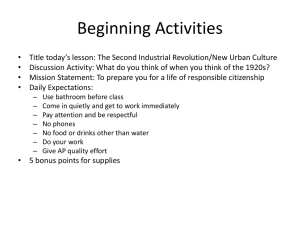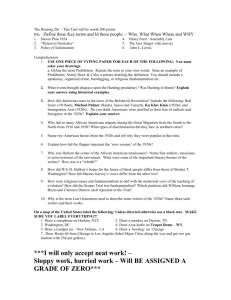Max Ames AP US History Ms. Rizzo April 5, 2010 The economy
advertisement
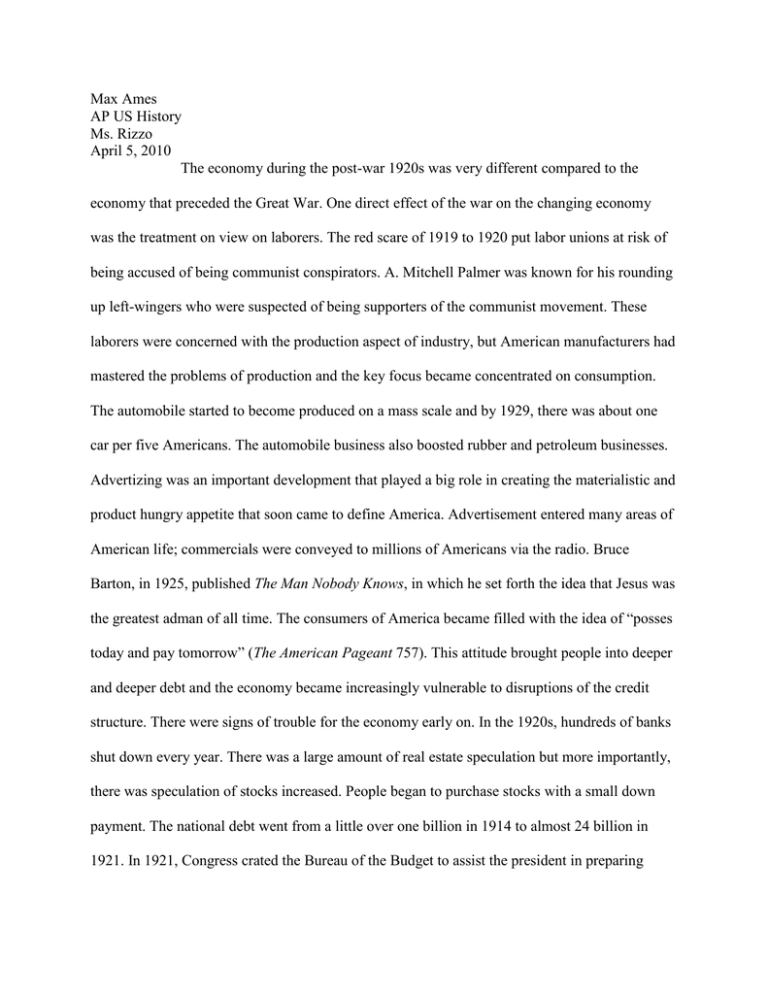
Max Ames AP US History Ms. Rizzo April 5, 2010 The economy during the post-war 1920s was very different compared to the economy that preceded the Great War. One direct effect of the war on the changing economy was the treatment on view on laborers. The red scare of 1919 to 1920 put labor unions at risk of being accused of being communist conspirators. A. Mitchell Palmer was known for his rounding up left-wingers who were suspected of being supporters of the communist movement. These laborers were concerned with the production aspect of industry, but American manufacturers had mastered the problems of production and the key focus became concentrated on consumption. The automobile started to become produced on a mass scale and by 1929, there was about one car per five Americans. The automobile business also boosted rubber and petroleum businesses. Advertizing was an important development that played a big role in creating the materialistic and product hungry appetite that soon came to define America. Advertisement entered many areas of American life; commercials were conveyed to millions of Americans via the radio. Bruce Barton, in 1925, published The Man Nobody Knows, in which he set forth the idea that Jesus was the greatest adman of all time. The consumers of America became filled with the idea of “posses today and pay tomorrow” (The American Pageant 757). This attitude brought people into deeper and deeper debt and the economy became increasingly vulnerable to disruptions of the credit structure. There were signs of trouble for the economy early on. In the 1920s, hundreds of banks shut down every year. There was a large amount of real estate speculation but more importantly, there was speculation of stocks increased. People began to purchase stocks with a small down payment. The national debt went from a little over one billion in 1914 to almost 24 billion in 1921. In 1921, Congress crated the Bureau of the Budget to assist the president in preparing careful estimates of receipts and expenditures for submission to Congress as the annual budget. The high taxes cause Secretary of the Treasury Mellon to come up with the theory that such high taxes forced the rich to invest in tax exempt securities rather than the factories that provided prosperous payrolls. Mellon helped create a series of tax reductions from 1921 to 1926 and reduced the national debt by about $10 billion. The 1920s were a huge advent for the arts as far as reaching the multitude and creating a new wave of society-questioning works of literature. The first major development that helps to move the arts forward in American society was the Radio. The first public broadcasting was done in November of 1920. The radio would soon the homes of Americans across the nation. A new form of entertainment was found in the voice acting in radio programs such as “Amos ‘n’ Andy.” The next great breakthrough in arts and entertainment was films, the first being The Great Train Robbery in 1903. By the 1920s, movies advanced beyond what they had been two decades earlier and in 1927, “talkies” started being released. Also, films started coming out in color. Many critics complained about the vulgarities that existed in both radio and motion pictures. Writers began to change their ideas and reflect differently on American society as the authors of an ageing culture began to die off. H.L. Mencken owned the magazine American Mercury and he assailed marriage, patriotism, democracy, prohibition, Rotarians, and middleclass Americans. The war did away with the contentment that many young writers showed towards traditional values and literary standards. F. Scott Fitzgerald came into the scene with his book This Side of Paradise, which featured flappers and their wooers. Ernest Hemingway, one of the writers of the time most affected by the war, sought to show the realities of war to the disillusioned America. Innovation in poetry was huge in the 1920s. Ezra Pound rejected old American society. e.e. cummings used unorthodox diction and odd type setting to produce poetical effects. In theatre, Eugene O’Neill was moving beyond the norms of society by introducing Freudian notions of sex in his plays. The 1920s was a time of radical change in both the way entertainment was communicated to its audience and the messages that the arts expressed, making a loud impression in society and putting the roar in the “Roaring Twenties.”

